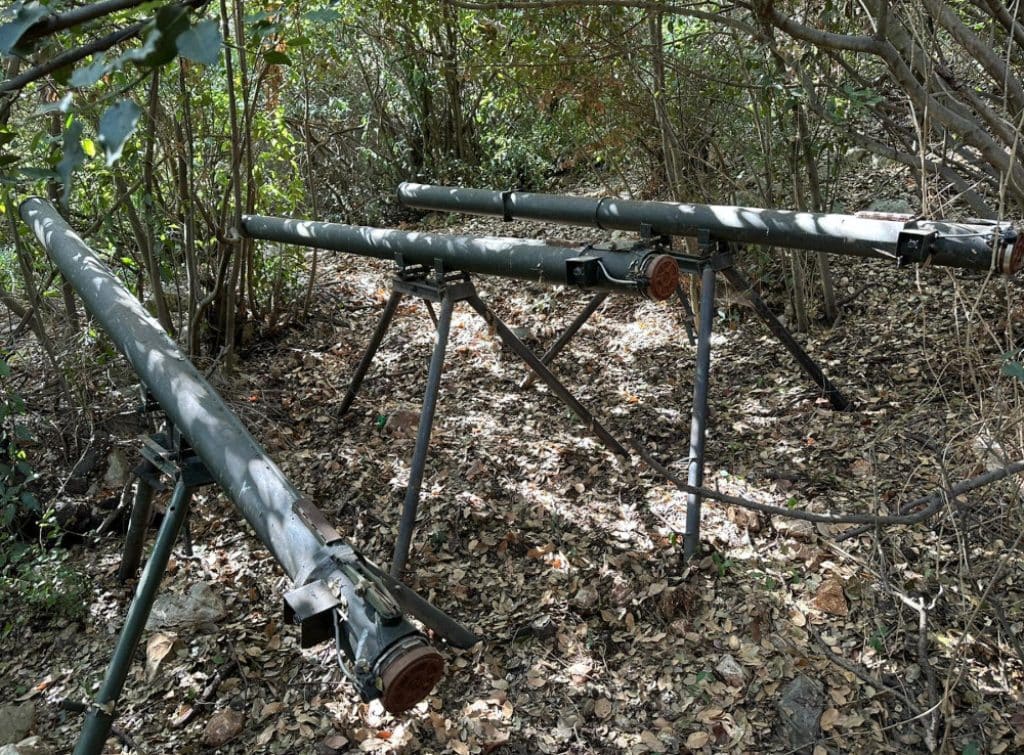
This article was originally published on Long War Journal. You can read the original article HERE

The Israel Defense Forces (IDF) carried out airstrikes on key Hezbollah commanders and operatives in the first days of November as Hezbollah continues to target Israel with rockets and drones daily. Hezbollah rocket attacks killed seven people on October 31.
Hezbollah and Iraqi militias carried out numerous drone attacks last month, including some targeting Israel from different directions using several drones at the same time. The IDF said that more than 100 drones launched at Israel were intercepted in October. Several struck areas in Israel, however, though the IDF did not specify how many reached their targets.
The IDF said it downed seven drones overnight between October 31 and November 1, five of which were launched from Iraq. On November 4, the IDF said it had to contend with multiple drone threats that came from different directions. “Earlier this morning (Monday), four UAVs fired from both Lebanon and the east were intercepted by the IAF [Israeli Air Force]. Two of the UAVs were intercepted after infiltrating into Israeli territory, and two were intercepted outside of Israel,” the IDF said. It was not clear whether the drone attacks were coordinated. However, a tactic of several drones launched at Israel simultaneously from different fronts would appear to be a new phenomenon.
The IDF has responded to the drone threats by targeting Hezbollah’s Aerial Unit 127. According to a recent report by Ynet, the unit “retains its strength,” and Hezbollah may have as much as 30 percent of its drone arsenal remaining. On November 3, the Israeli military said it killed Hezbollah member Ali Barakat, “a significant source of knowledge for the unit, spending over a decade planning and carrying out UAV attacks on Israel. He was also involved in developing cruise missiles and UAVs for Hezbollah.” Other strikes on the same unit occurred on October 30 and October 27. The October 27 strike targeted “infrastructure,” but the IDF did not say where it took place in southern Lebanon.
The battle against Hezbollah’s drones continues as the IDF also contends with other threats from the group and attempts to eliminate more of its commanders. On November 4, the IDF struck Riad Rida Ghazzawi, who Israel said served as “a commander in the Hezbollah Radwan force’s anti-tank missile system and planned and executed a significant amount of terrorist attacks, including firing anti-tank missiles at Israeli civilians and at IDF troops operating in southern Lebanon.” Other strikes hit a Hezbollah command-and-control unit and targeted a Hezbollah member responsible for smuggling weapons to Lebanon. “These eliminations are part of a continued IDF effort to damage Hezbollah’s military capabilities and to impair the group’s ability to rehabilitate itself,” the IDF said.
An IDF strike on November 4 targeted a local Hezbollah commander in Baraachit, three miles west of the Israeli border. “Abu Ali Rida was responsible for planning and executing rocket and anti-tank missile attacks on IDF troops and oversaw the terrorist activities of Hezbollah operatives in the area,” the IDF stated. In addition, a commander of Hezbollah’s Nasser Unit, a division-size unit responsible for half the border with Israel and conducting missile and rocket attacks, was killed. The Nasser Unit’s sister division, the Aziz Unit, controls a sector from the Mediterranean Sea to Bint Jbeil. The IDF also struck this unit’s command and control on October 31. The repeated IDF strikes on these units come as they continue to launch daily rocket barrages at Israel.
On November 3, the IDF eliminated Amin Alasi, who it described as “the Hezbollah commander of the Khiam area. Alasi was responsible for the execution of many anti-tank missile and rocket attacks toward Israeli communities in the Galilee Panhandle, and especially Metulla.” Metulla is an Israeli border community where five people were killed in a Hezbollah rocket attack on October 31. On November 1, the IDF also killed Mousa Izz al-Din, the head of Hezbollah’s forces on the coast near Tyre.
On October 31, 90 projectiles launched by Hezbollah crossed into Israel. On November 2 and 3, 100 and 105 projectiles crossed into Israel, respectively. On November 1, the IDF only provided partial data of 55 projectiles that crossed into Israel by 3 pm. The overall trend is that Hezbollah continues to launch around 100 rockets and drones a day at Israel, and the proportion of drone attacks has increased slightly over the past week.
This article was originally published by Long War Journal. We only curate news from sources that align with the core values of our intended conservative audience. If you like the news you read here we encourage you to utilize the original sources for even more great news and opinions you can trust!










Comments